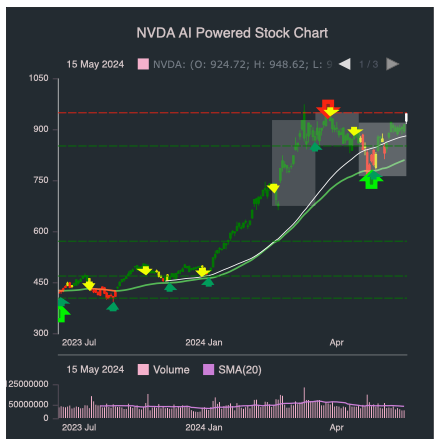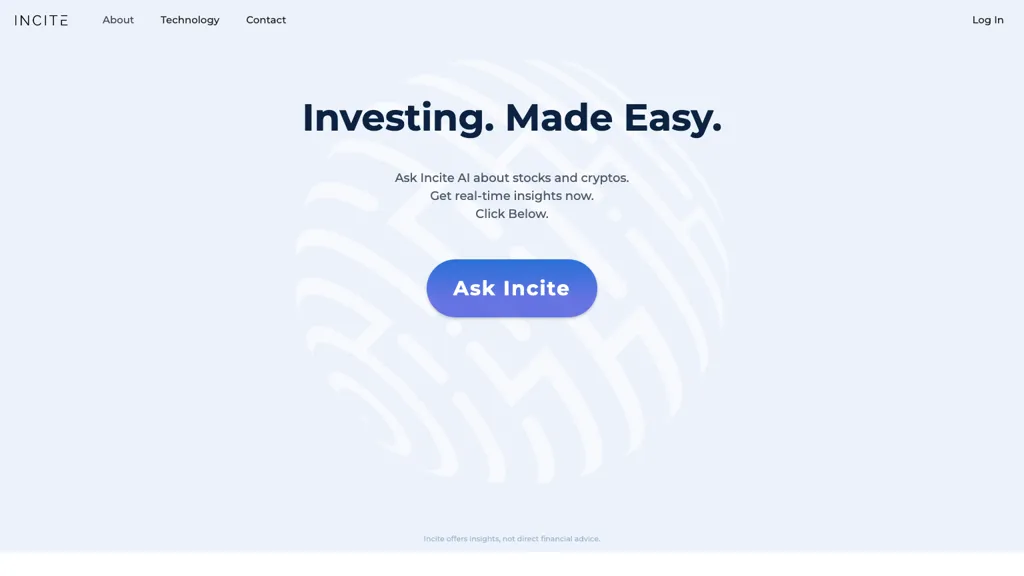AI stock Predicting/Analyzing platforms must be compatible and seamlessly integrate with existing tools, systems, and workflows. Integrating your platform into existing systems, tools and workflows is fantastic way to boost efficiency. These are the top 10 tips for assessing the integration and compatibility of these platforms:
1. Check Brokerage Integration
Platform integration with preferred brokers or trading accounts: Make sure whether the platform integrates with the brokerage you have chosen or account.
Trade execution: Check whether the platform permits direct trade execution through the integrated broker.
Account synchronization: Check to determine if your system is capable of syncing accounts' balances, transactions and positions in real-time.
2. Assess the availability of APIs
API access is important: Developers can use an API, or Application Programming Interface (API), to build their own software and automate their processes.
API documentation: Ensure that the API is well documented by providing examples and usage-cases.
Rate limits: Verify whether the API has reasonable rates and can accommodate your expected usage volume.
3. Integrating Third-Party Tools
Popular tools See if there are any integrations between the platform as well as tools like Google Sheets, Excel, or trading robots.
Data import/export: Make sure the platform enables easy export/import data from and into other tools.
Plugins/extensions: Verify if the platform is compatible with plugins or extensions for additional features.
4. Test Compatibility Operating Systems
Desktop compatibility - Ensure that the system you select is compatible with Windows, macOS and Linux.
Mobile compatibility. Find out if you can download the app on iOS or Android.
Web-based: If you want to be flexible, verify whether your platform can be accessed using the standard web browser.
5. Evaluate Data Integration Capabilities
Data sources - Ensure that the platform is linked to different sources of data (e.g. news feeds, market data, sentiment on social media).
Real-time feeds of data: Find out if the platform permits for real-time integration of data in order to give the most current analysis.
Historical data import: Verify whether the platform supports the import of historical data to backtest or analyze.
6. Assess Cloud and On-Premise Compatibility
Cloud-based platforms: Make sure the platform is accessible from anywhere connected to the internet.
On-premise Solutions: If you would prefer to deploy on-premises ensure that your platform is compatible.
Hybrid models: Find out whether the cloud-based platform integrates and on-premise capabilities.
7. Make sure that you have Cross-Platform Synchronization enabled.
Device synchronization: Ensure the platform is synchronized with data and settings across devices (desktop mobile, tablet).
Verify that changes made on one device reflect on another.
Access offline: Check that your application has restricted functionality and access to data when offline.
8. Assess the Compatibility of Trading Strategies
Algorithmic Trading: Make sure the platform supports automated or algorithmic trading strategies.
Custom indicators: Find out if you can utilize custom indicators or scripts.
Backtesting strategies: Check that your platform allows the backtesting of trading strategies using historical data.
9. Examine Security and Compliance
Data encryption: Verify that the platform uses encryption to secure data during transit and in rest.
Verify that your platform has an authenticated method that is secure (e.g. 2-factor authentication).
Compliance with regulations: Check if the platform is in compliance with relevant regulations.
10. Test Scalability and Performance
Scalability: The platform must be able to handle growing volume of data and users.
Performance under load: Check whether the platform continues to be flexible during market conditions with high volatility.
Utilization of resources: Make sure that the platform is using system resources effectively (CPUs and memory).
Bonus Tips
User feedback: Look for user reviews and testimonials when you are evaluating the site.
Free Trial: Test the integration of the platform with existing workflows and tools by using the demo or trial.
Customer Support: Ensure that your platform has a robust assistance in connection issues.
Use these guidelines to evaluate the integration and compatibility between AI platforms for stock prediction and analysis as well as your existing trading systems, and ensure that they increase the efficiency of your trading. Follow the most popular description about best AI stock trading bot free for blog tips including ai for stock predictions, incite, trading ai, best AI stock, trading with ai, AI stock trading, ai chart analysis, AI stock trading bot free, investing ai, investment ai and more.

Top 10 Suggestions For Evaluating Ai Trading Platforms For Their Versatility And The Possibility Of Trial.
Assessing the trial and flexibility choices of AI-driven stock prediction and trading platforms is vital to ensure they meet your needs before committing to a long-term subscription. Here are the top 10 strategies for evaluating each of the aspects:
1. Try an opportunity to try a free trial
Tip: Make sure the platform you are considering offers a 30-day free trial to check the features and capabilities.
You can test the platform at no cost.
2. Limitations on the duration and limitations of Trials
Tip: Assess the duration of the trial and any limitations (e.g. limited features or data access restrictions).
The reason is that understanding the constraints of trials will allow you to determine if the evaluation is comprehensive.
3. No-Credit-Card Trials
Find trials for free that don't ask you for your credit card number upfront.
This helps reduce the risk of unexpected costs and makes it easier to opt out.
4. Flexible Subscription Plans
Tips: Find out whether the platform offers flexible subscription plans that have clearly defined pricing levels (e.g. monthly or quarterly, or even annual).
Why: Flexible plans give you the option to select the amount of commitment that is suited to your requirements and budget.
5. Customizable Features
TIP: Ensure that the platform you are using has the ability to be customized, including alerts, risk settings and trading strategies.
The reason: Customization permits the platform’s adaptation to your particular needs in trading and your preferences.
6. Easy cancellation
Tips - Find out the process for you to lower or end an existing subscription.
What's the reason? In allowing you to leave without hassle, you'll avoid getting stuck in a plan that's not right for you.
7. Money-Back Guarantee
Find platforms that offer 30 days of money-back guarantees.
Why this is important: It gives you an additional layer of protection in case the platform doesn't meet your expectations.
8. All Features Available During Trial
TIP: Make sure that the trial version gives you access to all features and not just the restricted version.
What's the reason? You can make an the right choice based on your experience by testing all of the features.
9. Support for Customer Service during Trial
Tips: Make sure you contact the customer support during the test time.
You will be able to make the most of your trial experience when you can count on dependable assistance.
10. Feedback Post-Trial Mechanism
TIP: Make sure to check whether the platform solicits feedback following the trial to improve the quality of its service.
Why? A platform that takes into account the user's feedback is more likely to grow and satisfy the needs of the user.
Bonus Tip Options for Scalability
Ensure the platform can scale to meet your requirements, providing greater-level plans or features as your trading activities grow.
You can determine whether an AI trading and prediction of stocks software is a good fit for your needs by carefully considering the options available in these trials and their the flexibility before making a financial investment. Follow the top best ai trading platform advice for blog recommendations including best stock prediction website, best ai for stock trading, chart ai trading, AI stock investing, AI stock predictions, stock trading ai, invest ai, ai tools for trading, investing with ai, best ai for stock trading and more.
